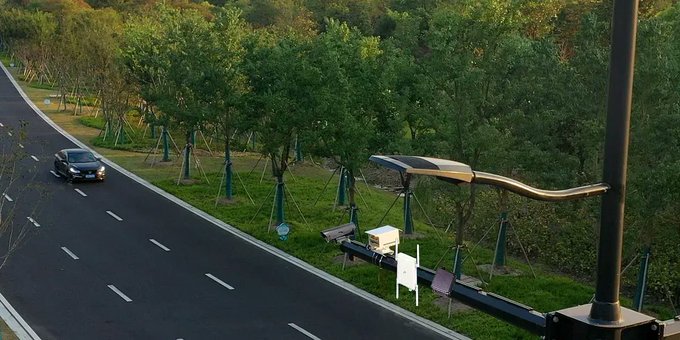ENORMOUS EFFORTS HAVE been made in the past two decades to create a car that can use sensors and artificial intelligence to model its environment and plot a safe driving path. Yet even today the technology works well only in areas like campuses, which have limited roads to map and minimal traffic to master. It still can’t manage busy, unfamiliar, or unpredictable roads. For now, at least, there is only so much sensory power and intelligence that can go into a car.
To solve this problem, we must turn it around: We must put more of the smarts into the infrastructure—we must make the road smart.
The concept of smart roads is not new. It includes efforts like traffic lights that automatically adjust their timing based on sensor data and streetlights that automatically adjust their brightness to reduce energy consumption. PerceptIn, of which coauthor Liu is founder and CEO, has demonstrated at its own test track, in Beijing, that streetlight control can make traffic 40 percent more efficient. (Liu and coauthor Gaudiot, Liu’s former doctoral advisor at the University of California, Irvine, often collaborate on autonomous driving projects.)
Mots-clés : cybersécurité, sécurité informatique, protection des données, menaces cybernétiques, veille cyber, analyse de vulnérabilités, sécurité des réseaux, cyberattaques, conformité RGPD, NIS2, DORA, PCIDSS, DEVSECOPS, eSANTE, intelligence artificielle, IA en cybersécurité, apprentissage automatique, deep learning, algorithmes de sécurité, détection des anomalies, systèmes intelligents, automatisation de la sécurité, IA pour la prévention des cyberattaques.






